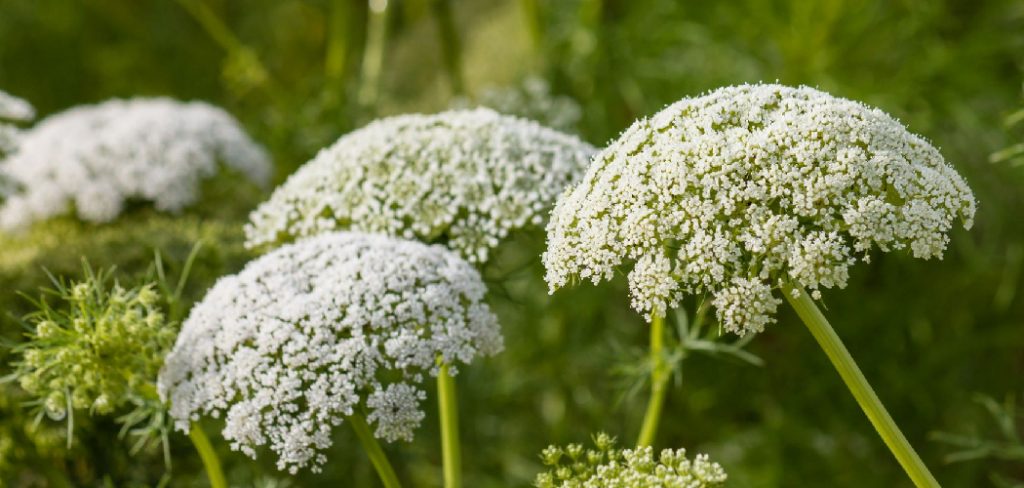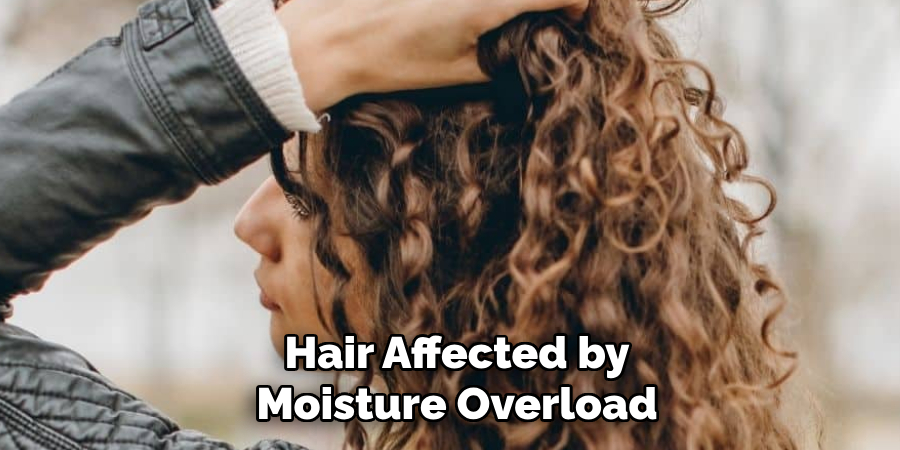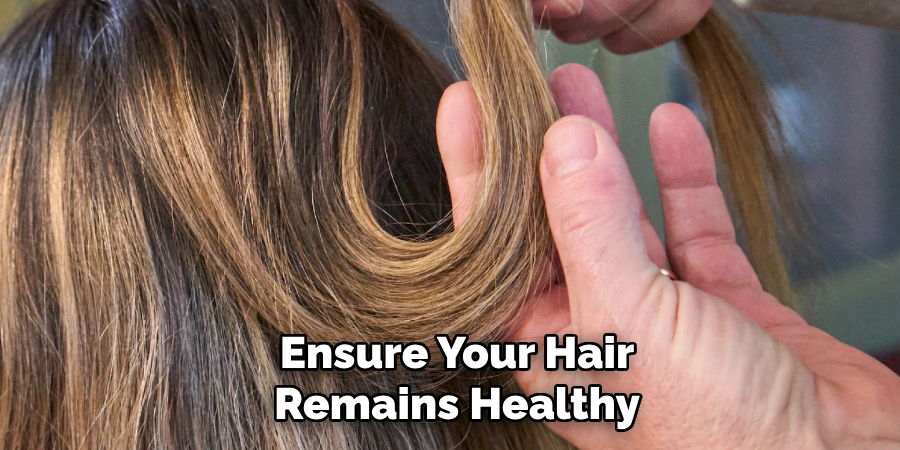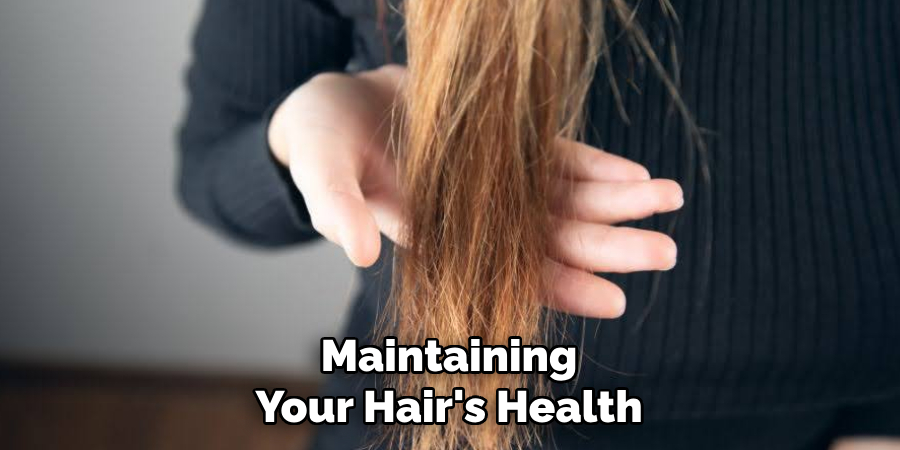Are you experiencing limp, frizzy hair that is difficult to manage? Or do you have curls or waves that are now straightened out due to excessive moisture in your hair? If so, you may be dealing with a condition called moisture overload.

Moisture overload is a common hair issue that occurs when hair absorbs too much moisture without sufficient protein to balance it out. This condition can make hair feel overly soft, limp, and more susceptible to breakage. Recognizing and addressing moisture overload is crucial for maintaining healthy hair.
In this guide on how to fix moisture overload, we will explore the signs of moisture overload, the underlying causes, and effective strategies to restore the balance between moisture and protein in your hair, ensuring strength and vitality.
What Will You Need?
Before we dive into the steps to fix moisture overload, let’s take a look at what you’ll need:
- Protein-based hair treatment or deep conditioner
- Moisturizing hair products (leave-in conditioner, oils, etc.)
- Clarifying shampoo
- Microfiber towel or t-shirt for drying hair
Once you have these items, you can follow the steps below to address moisture overload in your hair.
10 Easy Steps on How to Fix Moisture Overload
Step 1: Identify the Signs of Moisture Overload
The first step in addressing moisture overload is to identify the signs correctly. Hair affected by moisture overload typically exhibits a few telling characteristics. Your hair may feel overly soft and mushy when wet, almost like it has lost its structure. This can make it difficult to style and manage.

Additionally, the texture of the hair can become frizzy and more prone to tangling. You might also notice that your hair lacks elasticity; it may stretch easily but does not return to its original form, leading to increased breakage.
Another sign is a sudden change in the curl pattern, where curls or waves appear to be looser or completely straightened out. Understanding these indicators is crucial to implementing the right treatment plan and restoring your hair’s health and vitality. Identifying moisture overload early ensures that you can take prompt action and prevent further damage.
Step 2: Clarify Your Hair
Once you have identified the signs of moisture overload, the next step is to clarify your hair to remove any product buildup and excess moisture that may be contributing to the issue. Use a clarifying shampoo specifically designed to cleanse the hair and scalp deeply.
Apply the shampoo to your wet hair and massage it thoroughly, ensuring that all strands are covered. Rinse your hair thoroughly with lukewarm water to remove all the shampoo. Clarifying your hair helps reset your hair’s moisture balance and prepares it for the following protein treatment.
Step 3: Apply a Protein Treatment
Following the clarification of your hair, the next vital step is to apply a protein treatment. Protein treatments help to rebuild and strengthen the hair structure by infusing it with essential proteins that might have been depleted due to moisture overload.
Choose a high-quality protein-based hair treatment or a deep conditioner designed explicitly for protein infusion. Apply the product generously to your damp hair, making sure it is evenly distributed from roots to ends. Follow the instructions provided with the product; some may recommend leaving the treatment in for a certain duration. After the specified time, rinse your hair thoroughly with cool water.
This helps to seal the hair cuticles and retain the benefits of the protein treatment. Incorporating protein treatments into your hair care routine at regular intervals can significantly improve the resilience and overall health of your hair.
Step 4: Balance Protein and Moisture
After giving your hair a protein boost, it is crucial to maintain a balance between protein and moisture to prevent future moisture overload and ensure your hair remains healthy. Follow up the protein treatment with a moisturizing conditioner or a deep conditioning treatment that focuses on hydrating your hair. Apply the moisturizing product generously, ensuring all strands are well-coated, and let it sit for the recommended time.

Rinse thoroughly with cool water. It is essential to find a balance between protein and moisture treatments in your hair care routine—alternate between the two based on your hair’s specific needs. Monitoring your hair’s response to these treatments and adjusting accordingly will help maintain the right balance, keeping your hair strong, hydrated, and manageable.
Step 5: Use Leave-In Conditioners Wisely
After balancing protein and moisture in your hair care routine, it is important to use leave-in conditioners and other moisturizing products wisely. Opt for leave-in conditioners that provide lightweight hydration to prevent overloading your hair with moisture.
Apply a small amount to damp hair, focusing on the mid-lengths and ends, which are often the driest parts. Avoid applying leave-in conditioners too close to the scalp to prevent greasiness and product buildup. Using leave-in conditioners sparingly ensures that your hair remains manageable, hydrated, and free from excess moisture.
Step 6: Avoid Over-Washing Your Hair
To prevent moisture overload, avoid washing your hair too frequently, as this can strip your hair of its natural oils and disrupt the balance between moisture and protein. Aim to wash your hair two to three times a week, or as needed based on your hair type and lifestyle.
When washing your hair, use lukewarm water and a gentle shampoo that does not overly dry out your hair. Following up with the appropriate conditioner after each wash helps maintain the correct balance of hydration and nourishment for your hair.
Step 7: Limit Heat Styling
Excessive heat styling can exacerbate moisture overload and lead to further hair damage. Try to limit the use of heat tools such as blow dryers, straighteners, and curling irons.
When you do use heat styling tools, protect your hair by applying a heat protectant spray or cream beforehand. Additionally, use the lowest heat setting possible to achieve your desired style. Allowing your hair to blow dryers whenever possible helps retain its natural moisture balance and reduces the risk of moisture-related issues.
Step 8: Trim Your Hair Regularly
Regular trims are essential for maintaining healthy hair and preventing split ends, which can worsen moisture overload symptoms.
Aim to trim your hair every 6-8 weeks to remove damaged or split ends and promote healthier hair growth. Maintaining your hair’s health through regular trims ensures that it remains strong, vibrant, and less prone to moisture-related issues.

Step 9: Avoid Harsh Chemicals
Exposure to harsh chemicals like sulfates, parabens, and silicones can disrupt your hair’s balance of moisture and protein. Choose hair care products that are free from these damaging ingredients and opt for more natural formulations.
Additionally, avoid chemical treatments like perms, relaxers, or excessive color treatments, as these can further weaken your hair and make it more susceptible to moisture overload.
Step 10: Monitor and Adjust Your Hair Care Routine
Finally, continuously monitor your hair’s condition and adjust your hair care routine as needed. Pay attention to how your hair responds to different products and treatments, and be flexible in making changes to maintain the optimal moisture-protein balance.
Regular assessments allow you to identify any early signs of moisture overload before they become a significant issue, ensuring your hair remains healthy, strong, and manageable.
By following these steps and maintaining a healthy balance between moisture and protein, you can effectively combat moisture overload and achieve luscious, healthy hair.
5 Things You Should Avoid
When dealing with moisture overload, it is equally important to know what not to do to ensure you don’t exacerbate the problem. Here are five things you should avoid:
- Using Heavy Moisturizers Frequently: While moisturizing is essential, overusing heavy, emollient-rich products can worsen moisture overload. Opt for lightweight, balanced products instead.
- Skimping on Protein Treatments: Neglecting protein treatments when your hair is experiencing moisture overload can prevent the necessary strengthening and repair. Ensure you incorporate regular protein treatments to help rebalance your hair.
- Avoiding Clarifying Shampoos: Avoiding clarifying shampoos can allow build-up to persist and aggravate moisture issues. Use a clarifying shampoo periodically to remove excess product and restore your hair’s balance.
- Ignoring Signs of Overload: Not paying attention to the symptoms of moisture overload, such as limp and stretchy hair, can lead to further damage. Stay vigilant and adjust your hair care routine at the early signs of trouble to maintain healthy hair.
- Don’t Use Hot Water When Washing Your Hair: Hot water can strip your hair of its natural oils and disrupt the moisture balance. Stick to lukewarm or cool water for healthier, hydrated hair.
By understanding and avoiding these common pitfalls, you can manage moisture overload more effectively and keep your hair in optimal condition.

Conclusion
How to fix moisture overload is crucial for maintaining healthy and resilient hair.
You can effectively combat this issue by following a structured routine that balances moisture and protein. Key steps include identifying the problem early, incorporating both protein treatments and lightweight moisturizers, avoiding excessive use of heavy products, and steering clear of harsh chemicals and frequent heat styling.
Regular trims and mindful washing habits further support hair health. Adaptability is essential, so continuously monitor your hair’s response and adjust your routine accordingly.
Understanding these principles and maintaining a balanced approach can restore your hair’s natural vitality and enjoy stronger, healthier strands.
About the Author
Jane Hubbard is a passionate beauty expert with a wealth of experience in makeup, hair, and overall beauty techniques. After years of working as a hairdresser specialist, she followed her entrepreneurial spirit and started her own consultancy business.
Jane has always been driven by her desire to help others feel confident in their own skin, and she does this by sharing her knowledge, experiences, and practical beauty tips. Through her consultancy, she empowers individuals to embrace their unique beauty, offering tailored guidance that boosts both self-esteem and personal style.
Professional Focus
- Specializes in makeup, hairstyling, and beauty consulting.
- Provides personalized beauty advice, tips, and techniques to help individuals feel confident in their appearance.
- Dedicated to staying up-to-date with the latest industry trends and developments.
- Passionate about creating a comfortable and empowering experience for every client.
Education History
- University of Craft and Design – Bachelor of Fine Arts (BFA) in Woodworking and Furniture Design
- Woodworking Apprenticeships – Extensive hands-on training with skilled craftsmen to refine carpentry and furniture making techniques
- Online Courses & Masterclasses – Continued education in advanced woodworking techniques, design principles, and specialized tools
Expertise:
- Makeup artistry, hairstyling, and beauty consulting.
- Personalized beauty techniques to enhance confidence and self-expression.
- Educating clients on how to maintain their beauty routines at home.
